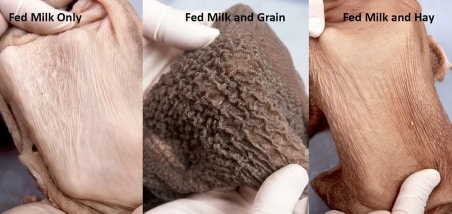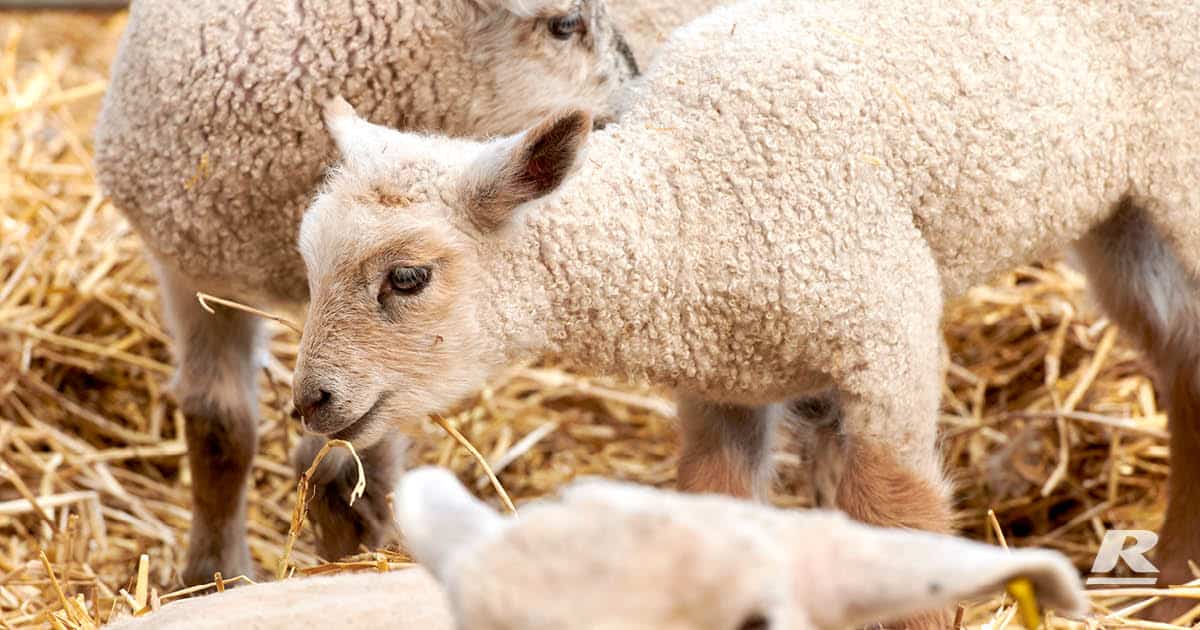5 Reasons to “Imprint Feed” your Lambs and Calves
“Imprint feeding” is a practice whereby calves and lambs are introduced to a solid feed (hay/grain/legumes) whilst still on milk leading up to weaning.
Below are some of the key advantages:
1. Improved Early Growth and Increase Feed Conversion Efficiency (FCE):
- Improved FCE: Solid feed particularly the starch found in cereal grains and some legumes is a key driver of rumen development (as illustrated figure 1). Early imprint feeding leads to early rumen development allowing calves to covert feed to body weight more efficiently
- Enhanced weight gain = higher weaning weights: Better FCE and increased solid feed intake which contributes to better early weight gain and often higher weaning weights.

2. Easier Weaning Transition and Reduced “Post-Weaning Slump”:
- Reduced stress at weaning: Since calves are already familiar with eating solid feed, one of the major stressors of weaning being transitioning from milk to feed, is greatly reduced.
- Smoother Digestive Adaptation: Early exposure to solid feed helps the rumen develop more quickly, allowing calves to digest solid feed more efficiently by the time they are weaned.
- Faster Recovery After Weaning: Both of the previous point lead to the animals experiencing less of the “post-weaning slump,” whereby often weight gain stalls. However, due to the imprint feeding they continue eating well immediately after weaning.
3. Increased Immune Response
- Healthier young stock: Well-nourished young animals are less susceptible to diseases. Imprint feeding can boost calves and lamb’s immune systems, as it supports proper nutrition during a critical growth period.
4. Ease of Training for Future Management
- Familiarity with People and Handling: Feeding often involves increased handling and interaction with humans, which can make future management and handling such as vaccinations, drafting and mustering easier because the animals are accustomed to being around people.
5. Economic Benefits
- Reduced Mortality Rates: Due to reduced stress, better nutrition and earlier development there is a lower risk of disease and metabolic issues, which reduces mortality rates in the herd.
- Increased Market Value and Profit: young stock that are well-grown and healthy tend to have higher market value, both as feeders or in breeding stock. As seen in our trial with advantage feeders (link below) there is a significant profit in imprint feeding animals with our “Reid Creep Feed” out-performing competitors on a net profit basis by over 60%.
- Increased lifetime productivity: Imprint feeding sets calves up for a strong start, meaning they hit goals such as joining weight much earlier and therefore have an increased numbers= of offspring over their lifetime hence the increased long-term performance.
All in all, imprint feeding is not only beneficial for animal health and productivity but it also leads to increased dollars in your hip pocket. Reids can help you with this using a variety of our tailored solutions for both cattle and sheep, where your system is grain-fed or pasture-fed we have the right mash for you.
For more information read our induction checklists or speak to our experts on 1300 REID FEED or enquire here >
Author
Tom Fitzgerald
Sales and Nutrition Account Manager
Sources: PennState
